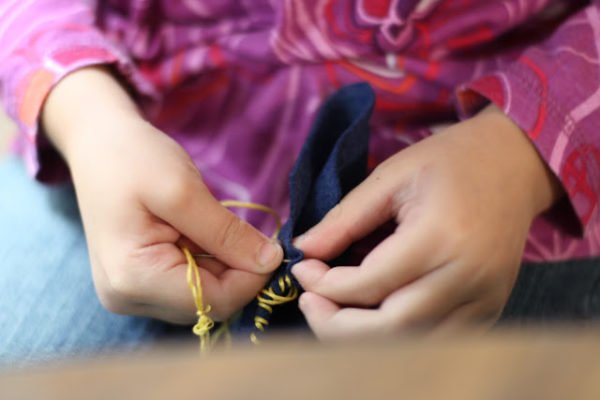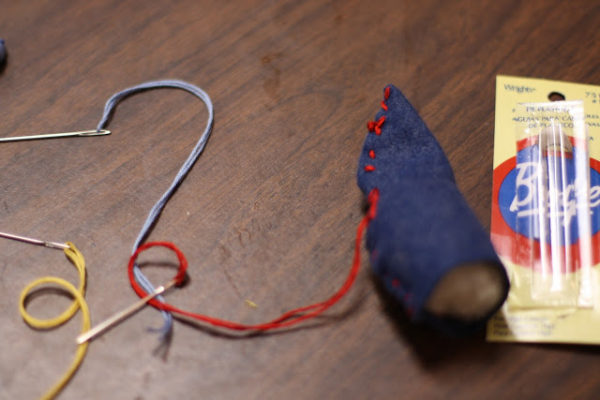This week my class began sewing little elves. We have been learning the tale of “The Elves and the Shoemaker.” This is a wonderful tale about the spirit of giving. It also offers a great opening to discuss wants and needs.
I used a traditional pattern for gnomes and altered it a bit for the elf. I adapted the pattern found in the book, “The Gnome Craft Book” by Thomas and Petra Berger (page 9). It is that pointy hat that gives the children the feeling it is an elf.
(Disclaimer!) This is my first attempt to make a basic pattern in digital form and then link it! If it fails – let me know!
Elf Pattern

Materials needed: needles, embroidery thread, wool felt, wool batting, wooden discs.

To sew this little elf, use the whip stitch. I double the thread and knot the ends.
Cut out wool felt.
Fold in half.
Stitch from bottom to tip of the “upside down” L. Then, sew from tip of hat to end of that edge. (see pattern link for specific place to sew)
The pattern is “Push in, pull out.” The needle will require a little “push” to get through the wool. The child will have the sewing when he/she gets the “rhythmic” movement of the stitch.
Let each child sew at their own level. Do not demand too much at this point. I like to engage the “love of the task” to build desire for future projects.
Stuff with wool.
My colleague, Mrs. Finch had a great idea! She purchased wooden discs for the bottom of the elves. This gives them the ability to stand without having to sew on the bottoms.
I hot glued on the discs for the children and we wrote their names on the bottoms.
These little elves are great for dollhouse and block play.
STANDARDS:
Math Standard 1: Algebraic Reasoning: Patterns – The student will analyze simple patterns.
2. Explain verbally and extend simple patterns (e.g. push in, pull out )
Math Standard 3: Geometry – The student will explore the relationship of objects in the environment.
3. Model and use words indicating relative position or direction (e.g., students describe the relationships between self and objects in space using on, above, below, beside, under, on top of, behind, and over).
Small Motor – Standard 1: The student will participate in activities that involve small motor skills.
1. Demonstrate increased control of hand and eye coordination.
Visual Art Appreciation – Standard: Demonstrate thoughtfulness and care in completion of artworks.
MULTIPLE INTELLIGENCES: Visual Spatial, Body-Kinesthetic, Musical-Rhythmic, Intrapersonal
BLOOM'S TAXONOMY: Understanding, Applying, Analyzing, Evaluating, Creating.













